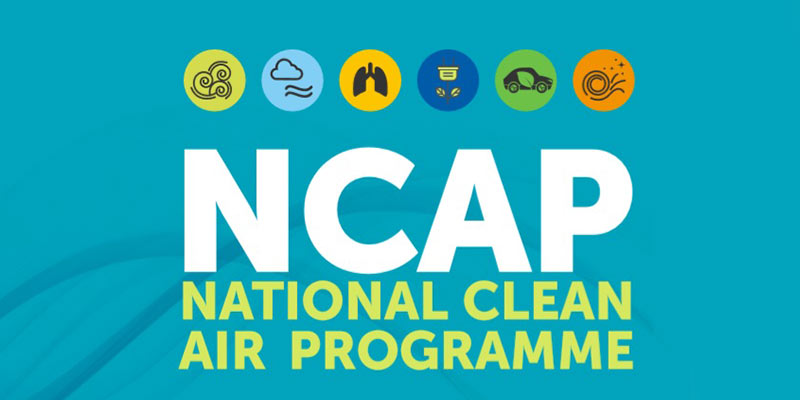- India
- Sep 17
- Mathew Gregory
National Clean Air Programme (NCAP)
The Central Government launched National Clean Air Programme (NCAP) as a long-term, time-bound, national level strategy to tackle the air pollution problem across the country in a comprehensive manner with targets to achieve 20% to 30% reduction in Particulate Matter concentrations by 2024 keeping 2017 as the base year for the comparison of concentration.
The goal of the NCAP is to meet the prescribed annual average ambient air quality standards at all locations in the country in a stipulated timeframe (long-term) and the target is of 20-30% reduction of PM2.5 and PM10 concentration by 2024.
Major objectives are:
1. To ensure stringent implementation of mitigation measures for prevention, control and abatement of air pollution.
2. To augment and evolve effective and proficient ambient air quality monitoring network across the country for ensuring a comprehensive and reliable database.
3. To augment public awareness and capacity-building measures encompassing data dissemination and public outreach programmes for inclusive public participation and for ensuring trained manpower and infrastructure on air pollution.
This will be a mid-term, five-year action plan to begin with keeping 2019 as the base year. However, the international experiences and national studies indicate that significant outcome in terms of air pollution initiatives are visible only in the long-term, and hence the programme may be further extended to 20–25 years in the long-term after a mid-term review of the outcomes.
Approach
1. Collaborative, multi-scale and cross-sectoral coordination between the relevant central ministries, state governments and local bodies.
2. Mainstreaming and integrating the existing policies and programmes of the including the National Action Plan on Climate Change (NAPCC) and other initiatives of Government of India in reference to climate changes.
3. With reference to NAPCC the main focus will be on mainstreaming the initiatives under five national missions of NAPCC viz. National Solar Mission, National Mission for Enhanced Energy Efficiency, National Mission on Sustainable Habitat, National Mission for a Green India and National Mission for Sustainable Agriculture.
4. While many of these policies and programmes are already part of our current actions, they may need a change in direction, enhancement of scope, and effectiveness and an accelerated implementation of time-bound plans.
5. Use the smart cities framework to launch the NCAP in the 43 smart cities falling in the list of the 102 non-attainment cities.
6. The NCAP will be dynamic and will continue to evolve based on the additional available scientific and technical information as they emerge and in response to international best practices and experiences that are available.
Under NCAP, 122 non-attainment cities have been identified across the country based on the Air Quality data from 2014-2018.
Background
India is committed to create a clean environment and pollution free air and water. In fact, it is mandated in our constitution. However, a vast country and an emerging economy like India, faces enormous challenges with its burgeoning population and widespread poverty, in meeting its various other significant commitments associated with poverty, and eradication of hunger under the Sustainable Development Goals (SDGs).
In recent years, medium and small towns and cities have also witnessed an increase in pollution, thus getting fast reflected in the non-attainment cities of India. Air pollution has increasingly become a serious concern, predominantly because of its health impacts and extends to agriculture and the general well-being of humans, floral and faunal population.
Air pollution emission issues are associated with many sectors, which inter-alia include power, transport, industry, residential, construction, and agriculture. Burning fossil fuels causes air pollution that both contributes to global climate change and also contributes to air pollution.
(The author is a trainer for Civil Services aspirants. The views expressed here are personal.)

